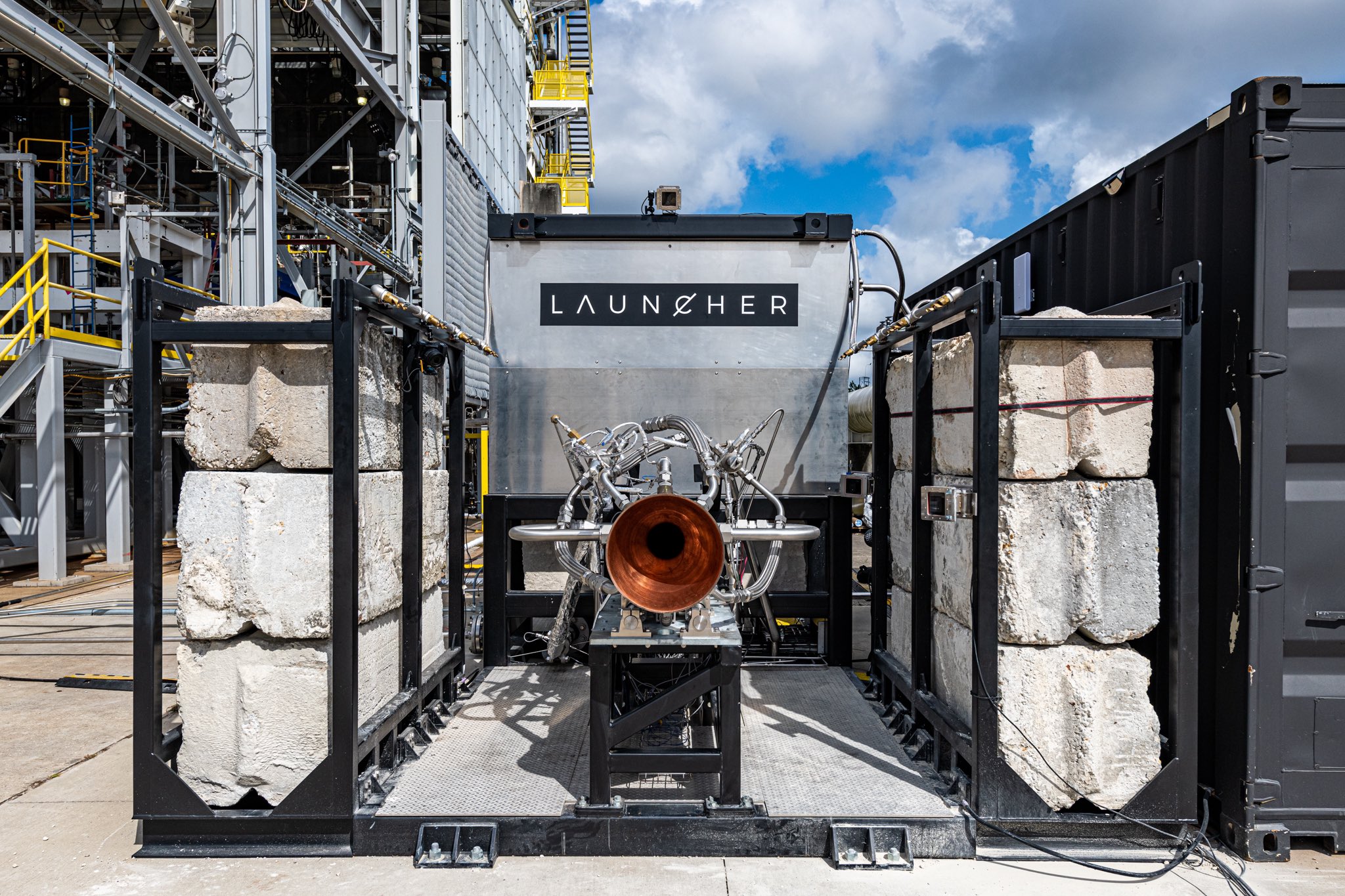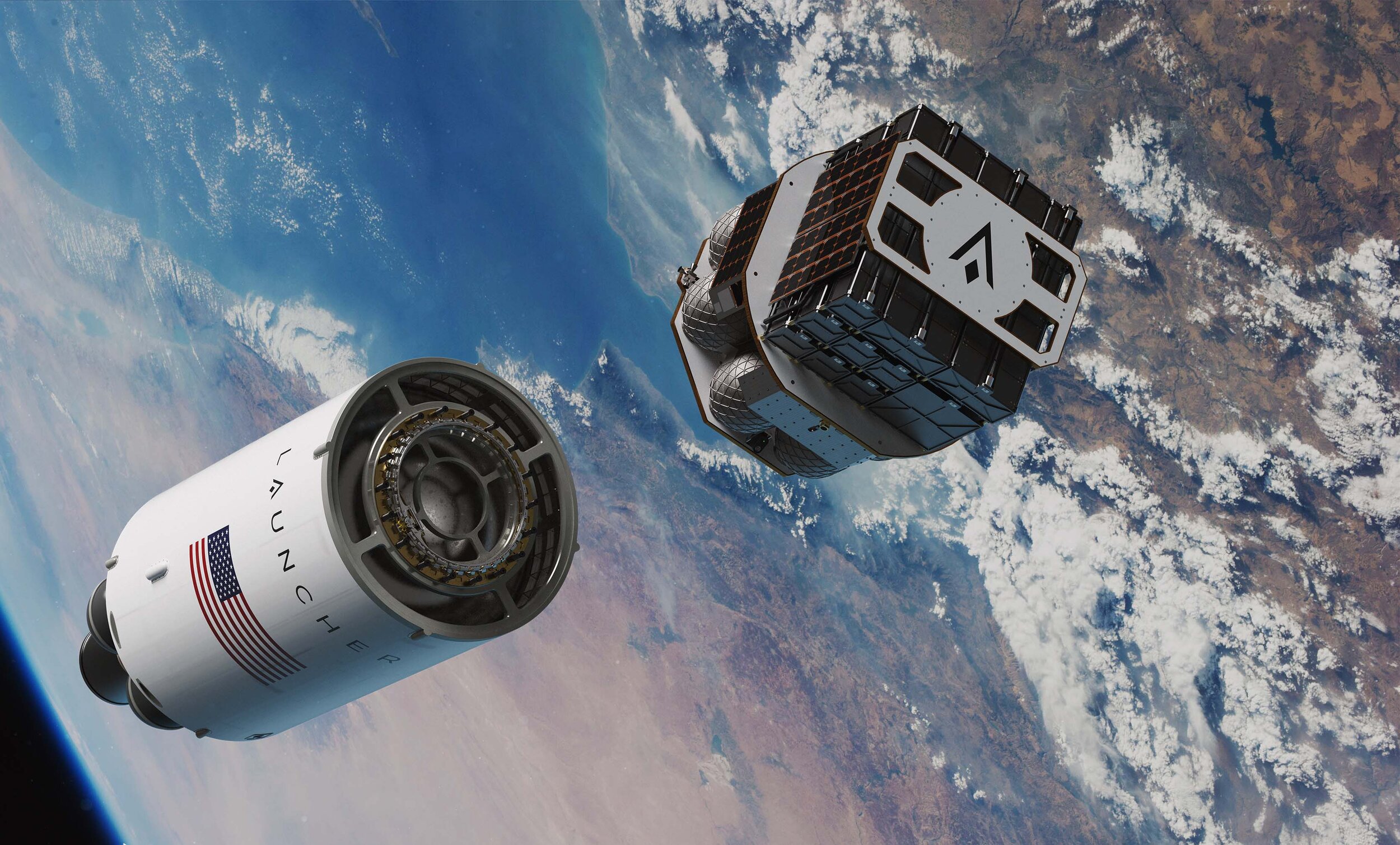Space startup Launcher adds a second VELO3D metal printing system to its Long Beach, California facility to upgrade its additive manufacturing practices. A developer of high-performance rockets for small satellites, Launcher, will use the new Sapphire platform just for printing high-performance rocket components in titanium, such as the pressure vessels for the company’s third stage orbital transfer vehicle and satellite platform.
With this new addition, Launcher and VELO3D –a leader in 3D printing for high-value metal parts– continue to expand their high-performance liquid rocket engine component-manufacturing collaboration and accelerate rocket development. Since the new 3D printing addition will only print titanium components, the first Sapphire model at the facility will be dedicated to creating Inconel rocket parts, such as fuel pumps, propellant tanks, and flight turbine housings.
As the small launch vehicle market is expanding, costs reduction and optimized manufacturing technologies are essential, especially when it comes to critical applications, such as propulsion and avionics. As far as rocket developers go, Launcher has been among the most open about using 3D printing solutions for space components. Even back when the startup was testing its first engines out of storage containers in its original facility on Long Island’s Naval Weapons Industrial Reserve Plant in New York, company founder and CEO Max Haot was very eager to disclose the benefits of leveraging additive solutions to built parts fast and at much less cost than with traditional rocket manufacturing processes.
In fact, the startup made headlines in the AM world after printing the first liquid oxygen (LOX) turbopump for a rocket engine in April 2021. Created in Inconel with specialized turbomachinery engineering software from Ansys and Velo3D’s metal AM system, the prototype turbopump was successfully tested for its high-performance closed-cycle liquid rocket engine, the Launcher E-2, at NASA’s Stennis Space Center in Mississippi. Following up on this success, the company expects to test the actual LOX soon.
“Velo3D really delivered on our turbopump, including its 3D-printed rotating impeller, all of which functioned perfectly the very first time at 30,000 rpm, using the first prototype,” said Haot. “Rocket engine turbopump parts typically require casting, forging, and welding. Tooling required for these processes increases the cost of development and reduces flexibility between design iterations. The ability to 3D print our turbopump—including rotating Inconel shrouded impellers, thanks to Velo3D’s zero-degree technology—makes it possible now at a lower cost and increased innovation through iteration between each prototype.”

Launcher E-2 liquid engine 3D printed LOX turbopump ready for testing at NASA Stennis center. Image courtesy of Launcher.
Founded in 2017, Launcher is developing its low-cost Launcher Light rocket to carry payloads of up to 150 kilograms (330 pounds) to low Earth orbit (LEO), using a single E-2 engine. Scheduled for take-off sometime in 2024, Launcher’s rocket is priced to the smaller market, with plans to sell missions for about $10 million per launch and customers that hope to operate within LEO. In addition, Haot and his team have been developing a universal orbital transfer vehicle and satellite platform designed to be compatible with both Launcher Light and SpaceX Falcon 9 rideshare flights. Orbiter is interoperable with either launch vehicle via a common 24-inch ESPA Grande adapter ring and is contracted to make its inaugural flight to sun-synchronous orbit on a SpaceX rideshare mission in October 2022.
With so much going on, the company relies heavily on its strategy to use AM in as many rocket components as possible. Anticipating high demand for its spacecraft, Launcher’s new advanced manufacturing facility in California will include a wide variety of in-house capabilities. Aside from VELO3D’s machines, it also has an AMCM M4K industrial metal 3D printer from EOS Group company Additive Manufacturing Customized Machines (AMCM). Moreover, the company said it also plans to take advantage of VELO3D’s contract manufacturing partners like Stratasys Direct Manufacturing when scaling up AM production.
Helping space companies innovate for off-Earth exploration is part of VELO3D’s leading-edge business strategy, especially now that the commercial sector’s share of the space market has surpassed government initiatives, especially in the U.S. and Europe. The soon-to-be-public company has serviced leading space venture SpaceX for years, as well as a wide range of space startups, like Sierra Space, a Nevada-based business that is creating reusable space planes and even a commercial space station.
VELO3D founder and CEO Benny Buller said that working with innovative companies like Launcher is “very exciting.” The reason being that it has already “proven out the value” and “experienced the quality of advanced metal AM” through current projects and understands the potential that this technology holds for “expanding the success of their out-of-this-world enterprise.”

Launcher’s E-2 liquid rocket engine test stand at NASA Stennis Space Center in Mississippi. Image courtesy of Launcher.
As the market for nano- and micro-satellite operators advances and matures, it will demand more dedicated but affordable launches, and many startups worldwide, like Launcher, are getting ready to fulfill this need in the coming decade. With the help of AM, they could revolutionize technology for spacecraft quicker and achieve higher overall performances than traditional manufacturing processes. There are many ways 3D printing can disrupt this industry in the future, especially as more space startups emerge globally and spaceflight becomes more accessible, paving the road for future interplanetary space exploration and in-space additive manufacturing.
Subscribe to Our Email Newsletter
Stay up-to-date on all the latest news from the 3D printing industry and receive information and offers from third party vendors.
You May Also Like
US Army Corps of Engineers Taps Lincoln Electric & Eaton for Largest 3D Printed US Civil Works Part
The Soo Locks sit on the US-Canadian border, enabling maritime travel between Lake Superior and Lake Huron, from which ships can reach the rest of the Great Lakes. Crafts carrying...
Construction 3D Printing CEO Reflects on Being Female in Construction
Natalie Wadley, CEO of ChangeMaker3D, could hear the words of her daughter sitting next to her resounding in her head. “Mum, MUM, you’ve won!” Wadley had just won the prestigious...
Blue Laser-powered M600 3D Printer Launched by Meltio
Founded in 2019 as a joint venture between Additec and Sicnova, metal 3D printer OEM Meltio develops and manufactures high-performance and easy-to-use metal 3D printing solutions that use its patented wire-laser metal...
3D Printed Storage Tanks Cut Material Costs by 25%
In a previous article, “Concrete Dreams: Let’s Print Money, Not Houses,” we discussed how the spotlight on 3D printing homes might be misplaced. Bollards, pedestrian bridges, and concrete tanks could...































